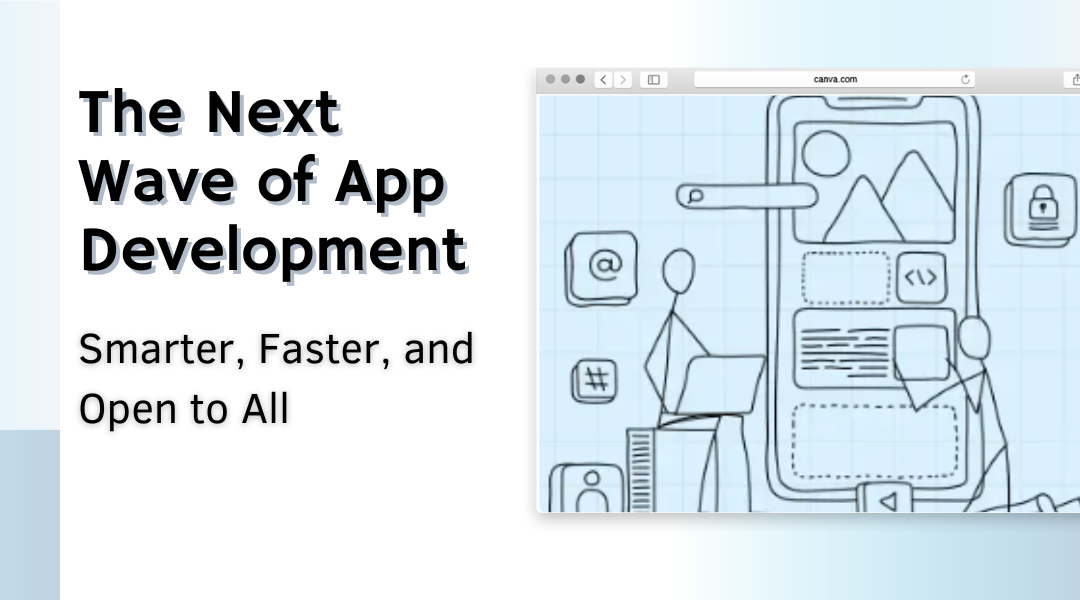The way we build software is on the verge of a radical change—not in some distant future, but right now. Thanks to breakthroughs in AI and no-code tools, creating apps is becoming as intuitive as drafting a slide deck. And this isn’t just about making life easier for developers. It’s about handing the keys to entrepreneurs, doctors, teachers, and even artists—anyone with a problem to solve and the drive to build their own solution.
AI: The New Co-Pilot for Builders
Think about how GitHub Copilot suggests code snippets as you type, almost like autocomplete on steroids. Now imagine that same concept applied to entire apps. Tools like Amazon’s CodeWhisperer and OpenAI’s ChatGPT are already helping developers draft functions, debug errors, and even write test cases in seconds. But the real game-changer? These systems are starting to understand context—not just syntax. A fintech startup can now generate compliance-ready code for a loan approval app by describing it in plain English. The AI handles the rest.
No-Code Goes Next-Level
Platforms like Bubble and Retool have already proven that you don’t need a CS degree to build functional apps. But the next generation is even wilder. Picture this: A restaurant owner sketches a rough workflow for table reservations on an iPad. An AI watches, interprets the doodles, and spins up a fully functional booking system—complete with SMS confirmations and waitlist management. No coding, no confusing menus, just building. This isn’t sci-fi; it’s where tools like Figma’s new Dev Mode and Microsoft’s Power Platform are headed.
Edge Computing and IoT: Apps That Think on Their Feet
The future isn’t just about what we build, but where it runs. Take a smart farm, for example. Instead of sending soil sensor data to the cloud and waiting for analysis, AI models now live right on the devices—processing info in real time to adjust irrigation instantly. Companies like NVIDIA and Siemens are pushing this boundary, letting apps make split-second decisions without lag. For industries like healthcare (think: wearable heart monitors) or logistics (autonomous delivery drones), this shift isn’t just convenient—it’s life-or-death.
The Rise of the “Citizen Developer”
The term might sound trendy, but the impact is real. Marketing teams are rolling out campaign trackers without IT’s help. Small nonprofits are building donor databases over coffee. Even kids are prototyping games with drag-and-drop tools like Scratch. The common thread? People are solving their own problems faster than ever. And as AI handles more grunt work, professional developers are freed up to focus on big-picture challenges—like integrating systems or hardening security.
Ethics Can’t Be an Afterthought
With great power comes great responsibility. When a school district uses an AI tool to generate IEPs (Individualized Education Programs), who checks for bias? If a no-code app handles patient data, is it HIPAA-compliant? The industry is scrambling to keep up. Initiatives like the EU’s AI Act and open audits of models like Meta’s Llama are steps in the right direction, but the conversation needs more voices—not just lawyers and engineers, but educators, activists, and everyday users.
What’s Next?
We’re heading toward a world where:
- Prototyping takes hours, not weeks. (Ever seen a TikTok of someone building an app live? That’ll be the norm.)
- Apps self-optimize. Imagine software that tweaks its own UI based on how users interact with it.
- Development is collaborative by default. Open-source AI models (like Mistral’s) and shared component libraries will let builders remix ideas globally.
The Bottom Line: The future of app development isn’t about replacing humans—it’s about amplifying creativity. Whether you’re a seasoned coder or a bakery owner with a napkin sketch, the tools are now there to turn “What if?” into “Here’s how.” And that changes everything.
